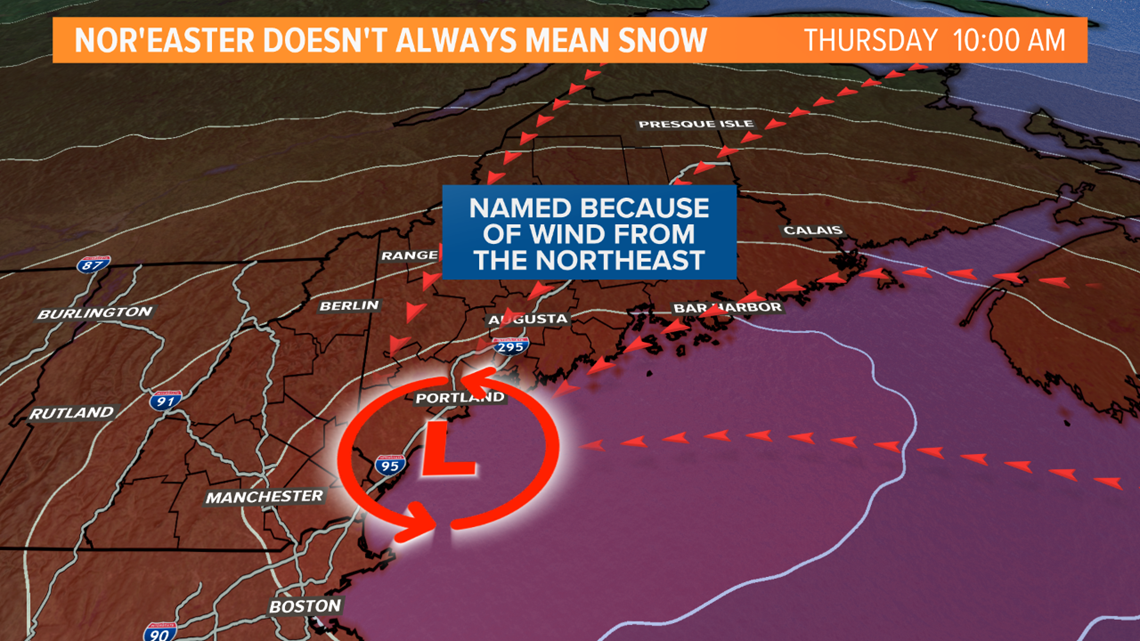PORTLAND, Maine — When you hear a nor'easter is on the way, it's understandable if your first thought is snow.
But the truth is the precipitation type -- rain or snow -- is not a requirement in the definition, even though nor'easters are most common in the winter, and produce snow.
They're defined by the wind direction. These storms are known as nor'easters because of their wind from the northeast, ahead of the storm, often off the ocean. The wind is the most important component, because it usually strengthens as the storm develops off the east coast.
Some of our worst nor'easters have been rainstorms, not snowstorms.
It's simply more common for these storms to happen when it's cold enough to snow, though they do happen in the fall and spring too.


For example, the Patriots' Day storm back in April of 2007 was a nor'easter, responsible for flooding rain, destruction of the coastline, and strong winds in Maine.
Thursday's storm can be called a nor'easter, but won't produce snow in Maine. Wind by far will likely be the biggest impact.

